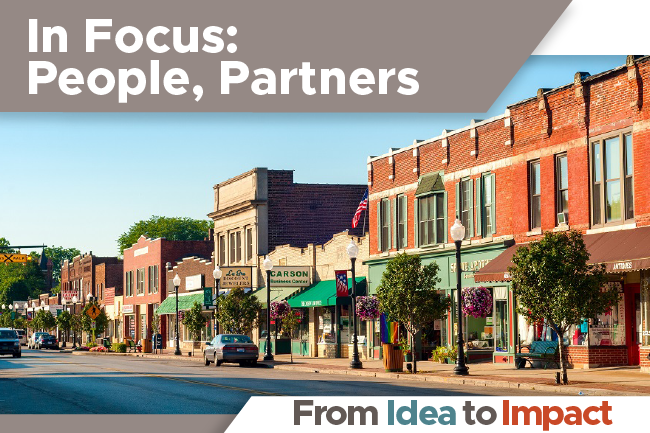Investing in Rural Civil Society: Three Insights

Since 2016, increasing numbers of donors interested in social and policy change have begun investing in rural civil society organizing and advocacy infrastructure. This nascent but growing trend reverses a steady 30-year withdrawal by philanthropy from rural funding and base building as it focused almost exclusively on urban communities, issues, and policies. In thus turning toward rural and small city life, donors and social change leaders alike have formed three fundamental insights.
Insight #1: Rural voters have good reasons to be dissatisfied with the political and economic status quo.
Since the 1980s, an accelerating combination of resource extraction, economic globalization and automation, retail consolidation, industrial agriculture, fossil fuel development, and regressive tax and budget policies has hurt many rural and small city communities across the country, even as such policies have sometimes helped metropolitan areas thrive. This combination, along with significant underinvestment in core infrastructure and neglect of basic public services, has accelerated economic decline and even contributed to an epidemic of decreased life expectancy due to deaths from suicide, liver disease, and opioid use. The response from the political class has largely ranged from indifference to patronizing neglect.
Insight #2: Small city and rural America is racially and ethnically diverse.
Donors and activists increasingly recognize just how racially and ethnically diverse rural and small-town America is. Ben Goldfarb’s 2018 All the People, All the Places shows that rural and small-town America is only 14 percent less diverse than the country as a whole and that 19 percent of rural residents are people of color. While much national news coverage focuses on intractable racial conflict in small towns and cities, the reality is far more varied and nuanced. More civil society funding and organizational infrastructure would help strengthen pluralistic and multi-racial community ties. Already, several community organizing groups in the Upper Midwest are collaborating on pioneering race/class community building and political education work in both metro and rural areas.
Truth is, there is enormous energy, innovation and commitment among people in these places to steward their communities toward a promising future. Polling from RuralOrganizing.org shows that nine-out-of-ten rural Americans—across all demographics—think the rural way of life is worth fighting for, and there are countless stories of community collaboration, creativity, and uplift in small cities and towns that go unreported in the national media
Insight #3: Small city and rural voters maintain disproportionate power to shape national politics
Despite their shrinking numbers, small city and rural voters still have disproportionate power to shape national policies and politics, thanks to provisions in the US Constitution originally designed to protect less-populated states. In general, those on the political and cultural right have understood both the power of non-metropolitan voters and their growing sense of political disenfranchisement better than their counterparts on the left.
In any case, it is now clear that serious engagement with non-metro voters is essential. It is simply not possible to arrive at a significant social consensus or a governing majority able to enact public interest policies while accepting massive and uncontested electoral, economic, and cultural losses in those places. Thankfully, despite conventional wisdom to the contrary, it is entirely possible to engage deeply with the people in these communities, find common ground, and reverse the decades-long trend of increasing geographic divisions.
For all of these reasons, a growing cohort of national and place-based funders are seeking to better understand, fund, and otherwise support innovative and impactful work outside of major cities. For example, donors seeking to build organizing, issue advocacy, and civic engagement infrastructure can look to the Heartland Fund.
The Heartland Fund was launched in 2018 by a group of Midwest and national donors to begin redressing the philanthropic neglect of rural, small city, and suburban communities in the region. Since then, Heartland’s mission has expanded geographically to promote increased multi-issue and race-forward organizing, issue advocacy, movement building, and civic engagement, and to support an infrastructure working to bridge social, racial, and ideological divides in regions across the U.S.
Another Heartland Fund objective is to connect donors, metro leaders and anchor groups with rural and small city allies. At the recent Funders Committee for Civic Participation annual conference, Heartland led a panel on rural organizing and power building that featured Ian Bridgeforth from Georgia Shift, Nicole Montclair-Donaghy from North Dakota Native Vote, and Matt Hildreth from RuralOrganizing.org. These exciting young leaders each talked about the culturally specific ways they are working in rural communities on initiatives such as the 2020 Census, bridging racial and ethnic differences, and cultivating and curating new information and ideas on issues and narratives of the day.
Through such activities, Heartland Fund and its allies are working to support rural and small city organizations and leaders who can serve both as anchors in their own communities, and as engines for the ongoing innovation we require to create a more equal, just, and prosperous country.
